Projects
MINING GEOLOGY RESEARCH GROUP
We utilize geological tools to address technical and socio-technical problems in mineral exploration, mine development, production, and reclamation.
Projects in Mining Geology Research
- We elucidate the geological processes that form ore deposits to identify mineral exploration vectors
- We use geological data to improve safety during mine operations
- We leverage ore deposit geology and geochemistry for efficient mineral processing and more holistic mine reclamation
- We integrate technical aspects of mineral exploration and mining engineering into stakeholder engagement and community-centered design.
”AVAILABLE
Please contact Dr. Elizabeth Holley for more information.
Current Projects

Center to Advance the Science of Exploration to Reclamation in Mining
Center to Advance the Science of Exploration to Reclamation in Mining
The Center to Advance the Science of Exploration to Reclamation in Mining (CASERM) represents a collaborative venture between Colorado School of Mines and Virginia Tech aimed at transforming the way that geoscience data are used in the mineral resource industry. Research focuses on the integration of diverse geoscience data to improve decision making across the mine life cycle, beginning with the exploration for subsurface earth resources continuing through mine operation as well as closure and environmental remediation. CASERM also addresses the critical need for training and preparation of graduates and young professionals by educating the next generation of scientists and engineers working in the mining sector.
Learn more about CASERM


Center for Mining Sustainability
https://miningsustainability.mines.edu/
FUNDING AGENCY
Universidad Nacional de San Agustin (Peruvian federal mining tax)
Project:
Regional Watershed Sustainability: Water Quantity, Quality, and Strategic Management, Arequipa, Peru
COLLABORATORS
- J. McCray (Hydrologist),
- K. Pfaff (Economic Geologist)
Project:
Predictive Geology and Geometallurgy of Small-Scale Mines, Arequipa, Peru
COLLABORATORS
- K. Pfaff (Economic Geologist),
- M. Guillen, (Geological Engineer),
- R. Huamani (Metallurgist)

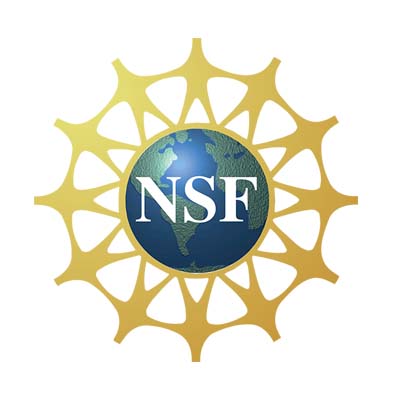
CAREER: Did Carlin-type gold come from magmas?
COLLABORATORS
- USGS
- Colorado Mining Association Education Foundation
- Relay Graduate School of Education
Students
- Dante Huff (PhD Candidate, Geology
- Second PhD position available)
FUNDING AGENCY
(NSF CAREER: $534,546, PI)
Nearly 80% of the gold produced in the United States comes from northern Nevada’s Carlin-type gold deposits (Perry and Visher, 2016; U.S. Geological Survey, 2017). These deposits are of great economic importance but their genesis is debated. Most recently Muntean et al. (2011) hypothesized that the gold came from magmas emplaced at 10 to 12 km depth, whereas Large et al. (2011) proposed that the gold was already present in carbonaceous black shales in the sedimentary host rocks. Exploration efforts could be improved by a better understanding of the role of syn-mineralization magmatism, and it is a scientific omission that the origin of the gold is still unknown after more than 50 years of production. Particularly in Nevada’s prolific Carlin trend, many studies have attempted to link the gold to Eocene magmas; although the data are permissive, unequivocal evidence remains elusive. In this study, our team takes a new approach: we are elucidating the genetic relationships between Carlin-type gold and Eocene magmatism in the Battle Mountain district, where there are magmatic-hydrothermal gold skarn and porphyry deposits, Carlin-type gold, and distal disseminated deposits with hybrid characteristics that may be the missing link between Carlin-type gold and magmas.
This project will integrate research and teaching on ore deposits to build educational pathways leading to careers in mining. Despite the critical importance of mining to national security and the increasingly complex environmental and social framework in which mining occurs, the United States has a shortage of skilled labor in this sector (National Research Council, 2013). The outlook is becoming dire as economic geology and mining engineering university programs drastically decline in number and size (Freeman, 2015). Major efforts are needed to increase the skilled mining workforce, including improved training of K-12 teachers in earth science, and the implementation of innovative curricula to recruit, retain and train undergraduate and graduate students in mineral exploration and mining (National Research Council, 2013). This grant provides innovative training opportunities for the next generation of K-12 science teachers, mineral exploration geologists and mining engineers. Teaching and research are integrated through a carefully designed three-part educational program which incorporates the project science into a graduate field course and undergraduate case study modules at Colorado School of Mines, and a K-12 teacher training workshop conducted in collaboration with Relay Graduate School of Education and the Colorado Mining Association. In addition to serving as the basis for two PhD dissertations, the 5-year project will reach 50 graduate students, 150 undergraduate students, 25+ science teachers, and 600+ K-12 students (see our Outreach page).
Project 1: Dante Huff
The research team has selected four gold deposits with hybrid characteristics (Lone Tree, Marigold-Valmy, North Peak, Trenton Canyon Au). At these deposits, the team is using zircon U-Pb geochronology, apatite and zircon (U- Th)/He thermochronology and apatite fission track thermochronology to compare the timing of magmatism and mineralization. Using the relatively new method of Fe-oxide (U- Th)/He thermochronology, the team also recently completed the first dating study of Fe-oxides in jasperoids, an alteration style common in CTGDs where silicified Fe-oxides replace carbonate lithologies.
Project 2: Position available
The deposits in the northern Battle Mountain district present a unique opportunity to investigate the sulfur isotopic composition of the mineralizing fluids, because the sulfides and sulfide rims are typically coarser than most CTGDs (Marigold and Lone Tree sulfide rims can be > 25 µm). Grains will be characterized using backscatter electron imaging and electron microprobe mapping to determine whether in situ analyses are required. If zoning is absent, δ34S analyses will be conducted on whole grains using an isotope ratio mass spectrometer at the USGS in Denver. In sulfide growth zones, 34S/32S have been determined using LA-MC-ICP-MS and NanoSIMS, in comparison to magmatic sulfides in the district.
Alteration minerals record the nature of the causative fluids in their stable isotope signatures and fluid inclusions. This study will improve upon previous work in the district by conducting these investigations on alteration minerals or assemblages of fluid inclusions in paragenetic association with ore phases (e.g. clays intergrown with gold-stage sulfides in veinlets, or quartz growth zones and healed microfractures hosting assemblages of fluid inclusions and mineral inclusions of gold-stage sulfides). This careful approach will provide the best possible assurance that the phases under investigation (fluid inclusions or alteration minerals) formed at the same time and under the same conditions as the gold. Fluid inclusion petrography and microthermometry will be used to identify the fluid phases and salinities, as well as the pressures and temperatures of fluid entrapment. Other paragenetically constrained alteration minerals such as clays will be hand-picked, and separates will be analyzed for δ18O and δD.
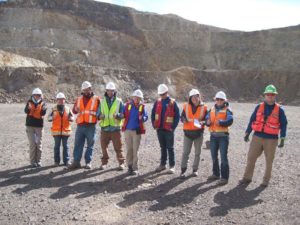
Colorado School of Mines students on a field trip in the Battle Mountain District, Nevada.

Promoting Healthy Communities and Sustainable Gold Supply Chains
COLLABORATORS
Colorado School of Mines
- Dr. Juan Lucena (PI)
- Dr. Nicole Smith,
- Dr. Jessica Smith
University of Colorado Boulder
- Dr. Joel Hartter
University of Texas Arlington
- Dr. Kate Smits
US Air Force Academy
- Dr. Tom Phelan
Students
- Alejandro Delgado
- Second PhD position available
FUNDING AGENCY
(NSF PIRE: $4 million, Co-PI)
We are an interdisciplinary, multi-institution, and global research collaboration funded by the US National Science Foundation. Our goal is to co-design socially responsible and sustainable mining practices with communities, engineers, and social scientists.
Artisanal and small-scale gold mining (ASGM) takes place primarily in the developing world in both the formal and informal sectors. It is generally characterized by relatively simple technologies and lower yields as compared to large-scale industrial mining. Approximately 30% of the gold used worldwide comes from ASGM. This gold is used in jewelry, finances, electronics, aerospace, and medicine.
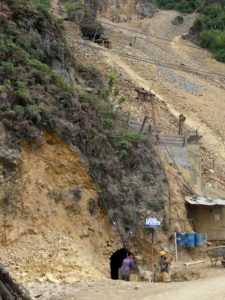
Small-scale mine workings in Marmato, Colombia
This style of mining has become a matter of global concern because of its environmental and health impacts. Artisanal mining is a leading cause of deforestation in places such as the Amazon. To process the ore, miners often use mercury – an element that is highly toxic. Using mercury is harmful to the environment, because it contaminates the air, water, and soil, and causes deforestation. Mercury is also harmful to humans and causes chronic diseases.
ASGM is an important way of life for millions of people around the world. Efforts to change this practice by using mercury-free alternatives have not been widely adopted in part because they have not been designed with miners’ concerns and needs in mind. Our project will improve this effort by working together with miners and affected communities in Latin America. Our mission is to jointly design, implement, and evaluate ASGM technologies and practices. In this way, the people most directly impacted will have a voice in deciding which alternative methods for mining and mineral processing are most fitting.
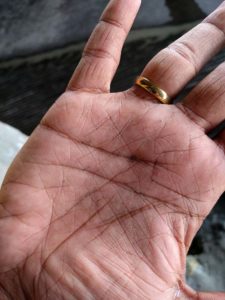
Gold flecks in a student’s hand, small scale mine site, Colombia

Mitigation of Groundfall Hazards
COLLABORATORS
Colorado School of Mines
- Dr. Gabe Walton (PI)
- Dr. Rennie Kaunda
- Dr. Eunhye Kim
- Dr. Jurgen Brune
- Dr. Ugur Ozaby
Students
- Meriel Young (MS graduate, Geological Engineering)
- Carlos Contreras (MS student, Mining Engineering)
- Lukas Fahle (PhD student, Mining Engineering)
FUNDING AGENCY
(CDC NIOSH: $1.2 million, Co-PI)
Fall of ground remains one of the most critical threats to the safety of miners in underground metal and non-metal mines. Furthermore, significant ground fall events and excessive ground movement can result in obstruction of escape and production drifts, block ventilation pathways and increase the need for support installation and rehabilitation.
To tackle those problems recent developments in mapping, monitoring, and data science can potentially be highly valuable tools to improve the prediction of hazardous ground conditions and develop mitigation strategies. Today most data is collected manually on the face or from core samples, putting staff in hazardous environments, introducing subjectivity into the collected data and increasing the response time to critical situations. More recently, stationary and mobile remote sensing methods such as LiDAR and photogrammetry have been successfully utilized to speed up data collection and increase accuracy. Some promising approaches include remote mapping of geological characteristics and discontinuities and the remote monitoring of convergence measurements.
As part of a NIOSH funded ground control research program, we are exploring faster and more accurate methods of collecting valuable data from underground mine openings, while improving the safety of miners and assets. The project furthermore aims to improve and accelerate innovation implementation workflows by effectively harnessing collaborations between industry, regulatory and academic entities.
Project 1: Meriel Young
Roof fall is considered to be one of the most significant hazards in underground coal mines (Mark et al., 2004; Palei and Das, 2009; Oraee et al., 2016). Hundreds of roof falls still occur every year (MSHA, 2017) and many of these still cause injury and lost time, as well as damaging equipment, disrupting ventilation, and blocking emergency escape routes. Even though a single roof fall event might cause fewer injuries or fatalities than a gas explosion for example, the total damage and overall number of injuries caused by roof falls are greater than any other type of mine accident (Deng et al., 2014; Wang et al., 2018).
One method previously developed to help assess roof instability in underground coal mines is the Coal Mine Roof Rating (CMRR). The CMRR is a field-based empirical method which is straightforward to use and gives a quantitative interpretation of coal mine roof geology. The CMRR classification system was developed to quantify the geological description of mine roof into a single value which could be used in engineering design.
This work uses two underground longwall coal mines located in the Western US (Mines A and B) as case studies to investigate which parameters are indicative of roof fall at these mines. It also evaluates whether the CMRR is applicable to these mines, and if not, why this might be. Data were collected at 30 sites in each mine. These data sets included the CMRR, a record of the roof stability and a series of non-CMRR parameters thought to also be potentially indicative of roof stability but which are not included in the CMRR. These data were then statistically analyzed for correlation between CMRR and roof stability. The CMRR was found to be moderately effective at Mine A but not effective at Mine B. At Mine A, faulting was found to be the primary control on roof stability. Topographic curvature, slope angle and depth of cover were found to have reasonable predictive capability for assessment of roof stability category at Mine B based on a logistic regression analysis.
These differences are likely due, at least in part, to the unusual topography above Mine B, with differential erosion resulting in a landscape of flat plateaus and sharp river valleys. It is suggested that these sudden changes in slope and topography lead to in-situ stress rotation and the development of shear stresses near the excavation at Mine B. This, combined with a lack of major discontinuities such as slickensides, which are central to the CMRR system, likely explains why the CMRR is much less effective at predicting roof stability at Mine B compared to Mine A.
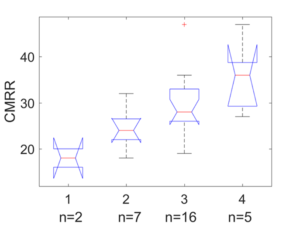
Comparative boxplot result from the ANOVA analysis of CMRR and roof stability on a scale of 1-4; p = 0.0073. The n values indicate the number of data points in each category.
Project 2: Carlos Contreras Inga
This part of the project focuses on improving rib support design by improving understanding of failure mechanisms and the complex interactions that occur between bolts and surrounding rock. This is being investigated using three different modelling approaches: continuum, discontinuum, and combined Finite-Discrete-Element-Method (FDEM) modeling. This study focuses on the impact of grain structure on the behavior of bonded block models for intact rock damage and deformation at the laboratory scale.
The research will develop a semi-deterministic grain-scale numerical model of a granitoid core specimen to examine the effect of the rock’s internal structure on the crack propagation. As a part of the first stage of this study, cracks were induced in several rock core specimens by applying uniaxial compressive loading up to the peak strength of the specimens. The strains produced on the specimens were measured and recorded using strain gauges. A representative specimen that was successfully not destroyed by the loading was selected and then cut into slices of less than 2 mm wide. A mineralogical characterization of these slices (currently underway) will be used to interpret a complete three-dimensional grain structure. This grain structure will then be used in a 3DEC BBM to evaluate whether or not previously established mineral and grain contact properties can be used in conjunction with a semi-deterministic grain-structure to provide a reasonable prediction of specimen mechanical behavior.
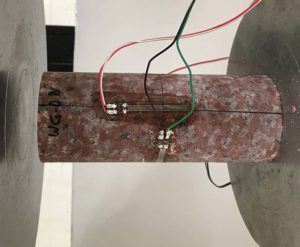
Granite core set up for UCS testing
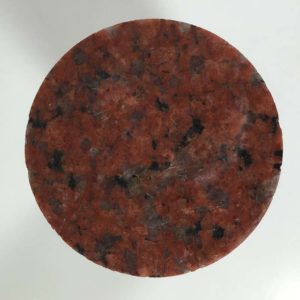
< 2 mm thick wafer of core ready for grain-based modeling.


Hyperspectral Mapping for Mining and Mineral Exploration: LiDAR Data Fusion, White Mica Wavelength Shifts
COLLABORATORS
- USGS Denver Spectroscopy Lab
Student
- John Meyer (PhD candidate, Mining Engineering)
FUNDING AGENCY
(NSF-INTERN)
The aim of the proposed research is to fuse the disparate data sets required for mapping the geology and geometry of excavations, with potential applications in the mining, civil construction, and space resources sectors. The proposed study will develop methods of integrating geologic and geometric data into a single, useful data set. The resultant integrated data set will be interactive, illustrating key lithologic and geochemical parameters in three dimensional space and allowing workers to remotely investigate an area. Successful development and deployment of such a system will make the task of collecting these required data sets safer, more efficient, and more accurate. LiDAR and imaging spectroscopy (hyperspectral) data will be collected in collaboration the United States Geological Survey’s (USGS) Spectroscopy Lab located in Lakewood, Colorado using USGS provided equipment. Data will be processed and analyzed at the Spectroscopy Lab. Results and data will be made available to the public via USGS data portals.
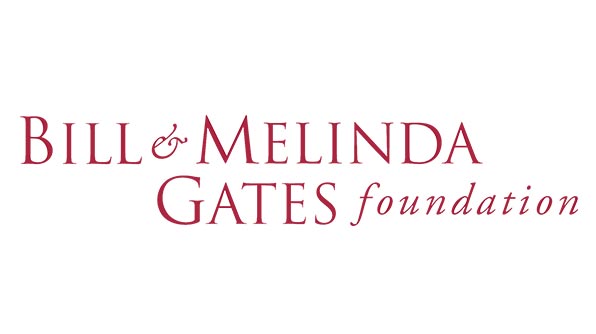
Managing Social & Environmental Risk through Collaborative Mine Design
COLLABORATORS
- Donlin Gold, Resource Capital Funds
- Mining Company A (anonymous)
Students
- Ben Teschner (PhD Candidate, Mining Engineering)
FUNDING AGENCY
(Gates Foundation: $50,000, PI)
Social conflict at mining projects negatively affects stakeholder communities and the companies aiming to extract mineral resources. When communities resist mining activities, they often risk losing their cultural identity or becoming fractionalized by the process. Community members sometimes invest significant amounts of money to combat the company, or risk physical harm to themselves in demonstrations and protests. Mining companies also face risks when communities fight their activities. Companies risk physical harm to employees and equipment, as well as reputational costs, project delays, or complete suspension of their activities. Yet, the social risk conditions that lead to these conflicts are difficult to accurately anticipate and even more difficult to quantify.
This study aims to develop a conflict likelihood and valuation model which will help companies, governments and stakeholders better capture stakeholders’ attitudes toward the mine in the project’s planning and valuation, and consider how addressing these concerns might improve the sustainability of the mining venture. The research comprises three parts:
Social Risk Valuation Model: The research team has developed a modeling method which translates stakeholder’s attitudes toward the project into company-community conflict likelihoods and overlays these data onto the project’s cash flow model. The work examines how increased chance of conflict affects the property’s Net Present Value (NPV) and how changes to a deposit’s designed mine life might affect the project’s social risk profile.

Russian Mountains near the Donlin Project, Alaska
Predictors of Mining Conflict Model: This research activity attempts to estimate the future likelihood of company-community conflict based on social and environmental indicators. The work employs employ regression modeling, machine learning and/or multivariate decision making tools to an anonymous mining company’s project risks database to determine which indicators are significant predictors of conflict and weights these to predict a likelihood of future social conflict.

Kuskokwim River Ice Road, Alaska
Case Study at Donlin Gold: The research examines the proposed Donlin Mine in Western Alaska and how community knowledge and concerns were incorporated into the project during the environmental permitting process. The driving concern among stakeholders are the effects that the mine would have on native peoples’ subsistence fishing activities, especially of wild salmon which spawn in the Kuskokwim River and its tributaries every summer. The research examines publically available data from the mines Environmental Impact Statement process; academic publications; and 20 in-person and phone interviews with community members, Donlin company employees and consultants, regulators, and Calista Native Corporation employees.
This research has enormous potential to affect the way mining companies, host governments, investors, and local communities evaluate a mine’s relationship with its stakeholders. By translating qualitative data into quantitative risk conditions and financial consequences, stakeholders’ attitudes can be assessed alongside the other conditions that have long determined mining projects’ value and development decision-making.

Fish and Caribou meat drying outside the home of a Native Alaskan
Past Projects
Exploratory Research on Rock Damage from Geologic & Induced Thermal Loading
COLLABORATORS
- Dr. Rennie Kaunda (Colorado School of Mines)
- Dr. Priscilla Nelson (Colorado School of Mines)
Student
- Marion Nicco (PhD Candidate, Mining Engineering)
FUNDING AGENCY
(NSF EAGER: $317,053, Co-PI)
Understanding the creation and propagation of rock fractures is important to multiple disciplines, from fundamental geology to civil engineering. Microwave irradiation has been proposed as an alternative rock fragmentation method that could reduce costs of excavation and particle size reduction by creating a network of micro fractures in the rock before the size reduction treatment. However, the underlying mechanisms that govern microwave-generated fracturing are not well understood. In the literature on rock fragmentation by microwaves, few studies have considered that most rocks contain multiple mineral phases and that microwaving two minerals at the same time is not just an addition of the dielectric properties of the individual minerals, the composition of the mineral is a key-determinant of how the whole sample will react. Our team’s contribution to this project focuses on establishing a better understanding of how mineralogy influences microwave induced fractures, particularly when hydrated minerals are present. By selecting the right type of rock for the potential use of microwaves as a pre-treatment, the cost of comminution could be decreased.
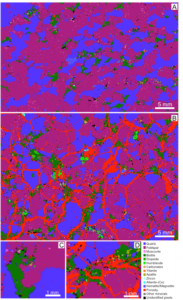
Microwave-induced fracturing in a granite. Automated mineralogy false color maps with cracks designated in red.
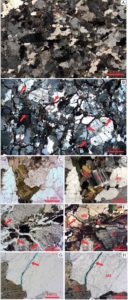
Microwave-induced fractures in a granite; thin section plane and cross-polarized light.
Dating Carlin-Type Gold Mineralization: a Test of the U-Th/He Thermochronometer
Dating Carlin-Type Gold Mineralization: a Test of the U-Th/He Thermochronometer
COLLABORATORS
- Dr. Elizabeth Holley
FUNDING AGENCY
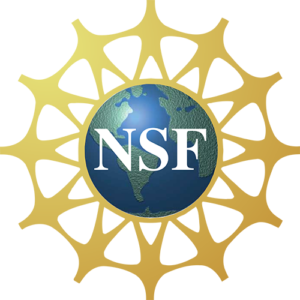
(NSF EAGER: $29,325, PI)
Ore Characterization at the Wharf Mine, South Dakota
Ore Characterization at the Wharf Mine, South Dakota
COLLABORATORS
- Dr. Elizabeth Holley
FUNDING AGENCY

(Coeur Mining: $135,877, PI)
Sustainable Energy Development Exchange in Indigenous Communities
Sustainable Energy Development Exchange in Indigenous Communities
COLLABORATORS
- Dr. Elizabeth Holley
FUNDING AGENCY
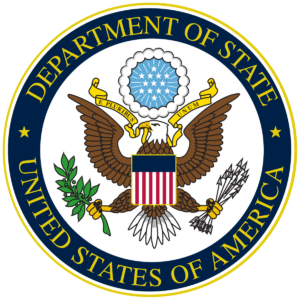
(US State Department: $250,000, Co-PI)
Sequestration of Acid-Generating Mill Concentrates
Sequestration of Acid-Generating Mill Concentrates
COLLABORATORS
- Dr. Elizabeth Holley
FUNDING AGENCY

(CC&V Gold Mines: $36,621, Co-PI)
New Exploration Models for Sediment-Hosted Gold
New Exploration Models for Sediment-Hosted Gold
COLLABORATORS
- Dr. Elizabeth Holley
FUNDING AGENCY
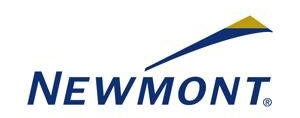
(Newmont Mining: $111,319, PI)
Influence of Dikes on Gold Mineralization at Marigold
Influence of Dikes on Gold Mineralization at Marigold
COLLABORATORS
- Dr. Elizabeth Holley
FUNDING AGENCY
![]()
(Goldcorp Inc.: $104,049, PI)